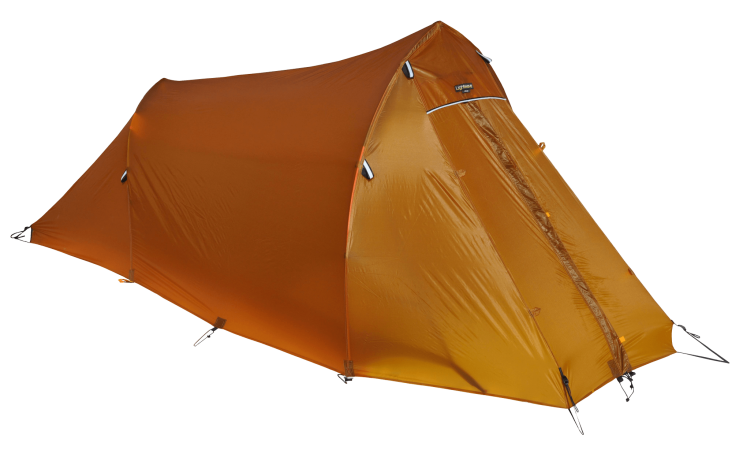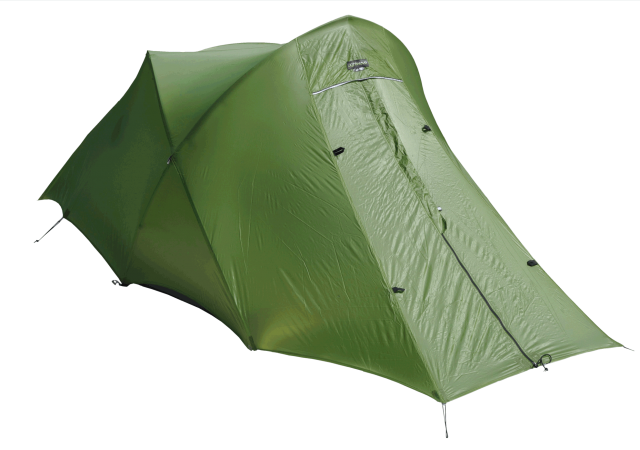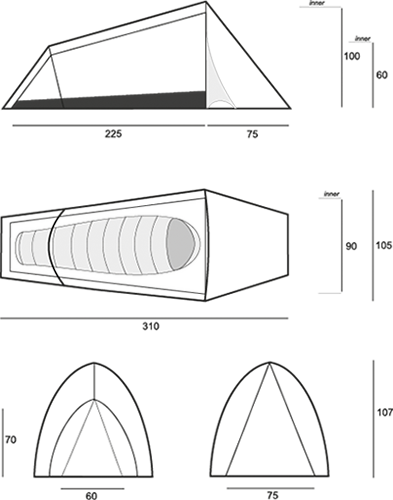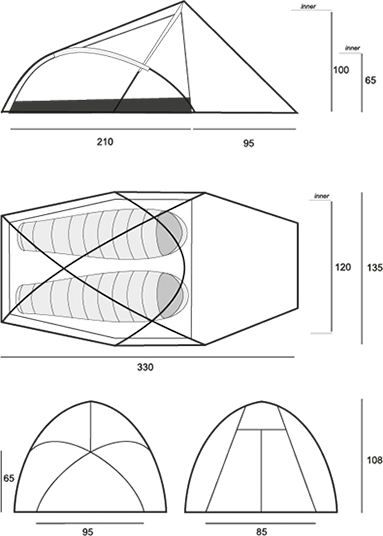Flysheet
45 g/m2, 20d nylon 6.6 ripstop, silicone-coated both sides,
3000 mm hydrostatic head
The raid flysheet is made from high-tenacity 20-denier nylon, which has comparable tear resistance to our 30 and 40 denier fabrics, but ultimately will not last as long in prolonged exposure to UV. Like all Lightwave tent flysheets it is silicone-coated on both sides (for water-resistance). Silicone coatings maintain the inherent strength of the fabric, whereas the conventional polyurethane (PU) coatings typically used on most tents reduce the tear strength by up to 70%.
Groundsheet
70 g/m2, 30d nylon taffeta, 3-pass PU-coated
3000 mm hydrostatic head, factory-taped seams
The raid groundsheet is made from a lightweight 50-denier taffeta (plain weave) nylon. The 50-denier fabric is a reasonable balance between the need to save weight and provide adequate protection from abrasion and moisture. With most of our tents, we don’t generally advocate the use of a footprint, but on the raid tents, we recommend this where it is appropriate to do so – in other words, when you know ground conditions are going to be harsh, or weight being carried (a footprint is an additional 200 g) is not quite so critical.
Inner canopy
25g/m2, 15d nylon 6.6 ripstop, DWR treated
Poles
DAC 8.84 mm Featherlite (aluminium alloy)
We use the DAC Featherlite poles on the raid tents simply because these have proved themselves time and again as the most reliable of the lighter weight alloys (ie non 7001-T6 alloy which is employed in probably 90% of all backpacking tents in the world.)
Pegs
Lightning pegs, 11 g each, square section
Flash pegs, 7 g each, rectangular section
Pegs are very important – without them, no tent could withstand anything more than the slightest breeze. Raid tents use our Lightning peg – similar in weight to most standard pegs, but substantially stronger and capable of living with some serious abuse. Costing four times as much as normal wire pegs, these are seldom seen on all but the most highly specified and expensive tents. Supplementing these for non-critical peg-points are our Flash pegs (which are literally “half a Lightning peg”).
Guylines
2.00 mm nylon, 3 m length, Linelok adjusters
Raid guylines are made of standard 2.0 mm nylon. They work, and with our Linelok adjusters they work and adjust very well.










